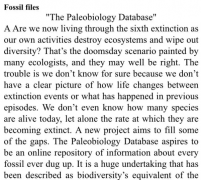2015年11月21日青岛朗阁雅思阅读考试真题回顾及解析
来源:青岛朗阁
浏览:
发布日期:2015-11-23 17:51
摘要:2015年11月21日雅思阅读考试都考了哪些题目?青岛朗阁小编第一时间为大家带来了2015年11月21日青岛朗阁雅思阅读考试真题回顾及解析,希望对大家有所帮助~
2015年11月21日雅思阅读考试都考了哪些题目?青岛朗阁小编第一时间为大家带来了2015年11月21日青岛朗阁雅思阅读考试真题回顾及解析,希望对大家有所帮助~
青岛朗阁雅思阅读教师 李佩玟
| 考试日期: | 2015年11月21日 |
| Reading Passage 1 | |
| Title: | Proto-writing in Americas |
| Question types: | 匹配题7+判断题6 |
| 文章内容回顾 | 古代人用三种方式记录文字,第一种是北美人用knot,像山洞里的壁画。然后说明记录了动物打猎以及星辰和一些自然现象,因为很复杂所以除了本土专门研究这个专业的人没有人来研究。第二章是智利人,用绳子打几个结表示什么数字。 |
| 参考答案 |
匹配:1-7: D A D B A (记录家庭关系) C D 判断:8. TRUE(被inca国王用来记录交易) 9. NOT GIVEN(美洲的Qsadhi壁画的发现受到普遍关注,别的专业的人也来研究) 10. FLASE (记载可以长期保留) 11. FALSE(外人很难看懂) 12.TURE(做生意使用的是绳结) 13.TURE(experts differ at when and where human began 记录文字) |
| 题型难度分析 | 本文是关于人类行为研究类的文章。题目结合了常见的细节题型-判断题(顺序做题,难度适中)和匹配题(乱序做题)。 |
| 题型技巧分析 |
判断题作为雅思阅读的主流题型,一直是让考生较为困惑的一种题型,这种困惑往往来自于中西方文化在思维模式上的差异。西方文化较为侧重证据性,追求思维上的细节对应,因此考生在做题中应逐渐适应这种逻辑方式。可参考以下判断原则: True: 1. 同义改写 2. 归纳总结 False: 1. 直接相反 2. 原文是多个项目并列但题目是“必须”或者“只有”3. 缺少条件成分 Not given: 1. 内容在原文中无提及 2. 题目范围小于原文范围 3. 比较关系不成立 *判断题应特别注意书写答案的规范性:注意看是YES/NO/NOT GIVEN 还是TRUE/FALSE/NOT GIVEN, 书写时要大写全拼。 |
| 剑桥雅思推荐原文练习 | 剑6 Test 2 Passage 3 |
| Reading Passage 2 | |
| Title: | Cast away |
| Question types: | 匹配6 + 多选4+Summary 5 |
| 文章内容回顾 | 本文关于人们到一个荒岛上怎么生存的。包括以前人们怎么生活,留给以后的迷路人什么东西,船出了海难后船员求生。有个Taylor根据这个写了这个本书。提到了英吉利的两个岛屿:Antipodes islands in Antarctica |
| 参考答案 |
14. C (A man who didn’t come back) 15. G (Critics on this book’s content/context) 16.E (An account on How the writing of this book began) 17. D (One mistake regarding the A wrong location) 18-19:待补充 20-21:Cast away是如何survive的? C-Use Penguin eggs to store rainfall for a particular time E-ear the root of a special plant 22-23: p的船是情况属实的? B-use some self made tools D-22 soldiers all survived 24. gaps 25. feather 26. textbook 27. fish/fishing |
| 题型难度分析 | 本篇文章属于文学类文章,涉及题型种类多,其中包括段落信息匹配题,难度中上,是让考生感觉较为头疼的一种题型。 |
| 题型技巧分析 |
Matching中的段落信息匹配题是雅思阅读各类题目中难度较大的题目,这类题目往往以“Which paragraph contains the following information?”为标志,考查考生查找信息以及理解文章的能力。 题型特点: 1. 绝对乱序 2. 考察细节信息以及同义转换 3. 种类繁多 4. 部分题目有重复选项 解题步骤: 1.审题并阅读所有题目 2.画出题目关键词并做出预判 3.通读段落,依次寻找答案 Summary题型要特别注意阅读题目要求(instructions), 本题是从原文章中找答案填空,基本以填写原词为主。 解题技巧: 1.确定定位词; 2.分析空格:分析空格词的词性,空格前后的词句,以实现进一步的限定; 3.注意关系词(连接词):并列关系、比较关系、因果关系等; 4.注意空格前后词的同义替换词。 |
| 剑桥雅思推荐原文练习 | 剑9 Test 3 Passage 2 |
| Reading Passage 3 | |
| Title: | British Architecture |
| Question types: | 选择题6+填空题7 |
| 参考答案 |
28. The feature of medieval architecture was A immense B useful C decorative D bizarre 29. What contributes to the outward-looking buildings in the 16th century? A safety B beauty C quality D technology 30. Why were the buildings in the 1660s influenced by the latest European trends? A Because the war was lost. B Because the craftsman came from all over the Europe C Because the property belongs to the gentlemen and nobles. D Because the monarch came back from the continent. 31. What kind of sense did the British Baroque imply? A tough B steady C mild D conservative 32. The individual craftsman was no more the key to creation for the appearance of A Crystal Palace B preindustrial manufacturing return C industrial process in scale D ornament 33. The building style changed after World War Two as a result of A abundant materials B local authority C shortage of cheap housing D conservative views 34. The Anglo-Saxon architecture failed to last because the buildings were constructed in wood. 35. Different form the medieval architecture, the buildings of the 16thcentury represents status and wealth. 36. The costly glass was applied widely as an expensive commodity in that years. 37. Inigo Jones was skilled at handlingclassical style. 38. William Morris favored the production of furniture and textiles made in pre-industrial manufacturing techniques. 39. The architects such as Edwin Lutyensprovide the landlord with conservativehouses. 40. After World War Two, the architect commission shifted from individual to local authorities. |
| 相似英文原文阅读 |
British Architecture Architecture is about evolution, not revolution. It used to be thought that once the Romans pulled out of Britain in the fifth century,their elegant villas, carefully-planned towns and engineering marvels like Hadrian's Wall simply fell into decay as British culture was plunged into the Dark Ages. It took the Norman Conquest of 1066 to bring back the light, and the Gothic cathedral-builders of the Middle Ages played an important part in the revival of British culture. However, the truth is not as simple as that. Romano-British culture - and that included architecture along with language, religion, political organisation and the arts - survived long after the Roman withdrawal. And although the Anglo-Saxons had a sophisticated building style of their own, little survives to bear witness to their achievements as the vast majority of Anglo-Saxon buildings were made of wood. Even so, the period between the Norman landing at Pevensey in 1066 and the day in 1485 when Richard III lost his horse and his head at Bosworth, ushering in the Tudors and the Early Modern period, marks a rare flowering of British building. And it is all the more remarkable because the underlying ethos of medieval architecture was 'fitness for purpose'. The great cathedrals and parish churches that lifted up their towers to heaven were not only acts of devotion in stone; they were also fiercely functional buildings. Castles served their particular purpose and their battlements and turrets were for use rather than ornament. In a sense, the buildings of the 16th century were also governed by fitness for purpose - only now, the purpose was very different. In domesticarchitecture,in particular, buildings were used to display status and wealth. This stately and curious workmanship showed itself in various ways. A greater sense of security led to more outward-looking buildings, as opposed to the medieval arrangement where the need for defence created houses that faced inward onto a courtyard or series of courtyards. This allowed for much more in the way of exterior ornament. The rooms themselves tended to be bigger and lighter - as an expensive commodity, the use of great expanses of glass was in itself a statement of wealth. There was also a general move towards balanced and symmetrical exteriors with central entrances. With the exception of Inigo Jones (1573-1652), whose confident handling of classical detail and proportion set him apart from all other architects of the period, most early 17th century buildings tended to take the innocent exuberance of late Tudor work one step further. But during the 1640s and 50s the Civil War and its aftermath sent many gentlemen and nobles to the Continent either to escape the fighting or, when the war was lost, to follow Charles II into exile. There they came into contact with French, Dutch and Italian architecture and, with Charles's restoration in 1660, there was a flurry of building activity as royalists reclaimed their property and built themselves houses reflecting the latest European trends. The British Baroque was a reassertion of authority, an expression of absolutist ideology by men who remembered a world turned upside down during the Civil War. The style is heavy and rich,sometimes overblown and melodramatic. The politics which underpin it are questionable, but its products are breathtaking. The huge glass-and-iron Crystal Palace, designed by Joseph Paxton to house the Great Exhibition of 1851, shows another strand to 19th century architecture - one which embraced new industrial processes. But it wasn't long before even this confidence in progress came to be regarded with suspicion. Mass production resulted in buildings and furnishings that were too perfect, as the individual craftsman no longer had a major role in their creation. Railing against the dehumanising effects of industrialisation, reformers like John Ruskin and William Morris made a concerted effort to return to hand-crafted, pre-industrial manufacturing techniques. Morris's influence grew from the production of furniture and textiles, until by the 1880s a generation of principled young architects was following his call for good, honest construction. The most important trends in early 20th century architecture simply passed Britain by. Whilst Gropius was working on cold, hard expanses of glass, and Le Corbusier was experimenting with the use of reinforced concrete frames, we had staid establishment architects like Edwin Lutyens producing Neo-Georgian and Renaissance country houses for an outmoded landed class. In addition there were slightly batty architect-craftsmen, the heirs of William Morris, still trying to turn the clock back to before the Industrial Revolution by making chairs and spurning new technology. Only a handful of Modern Movement buildings of any real merit were produced here during the 1920s and 1930s, and most of these were the work of foreign architects such as Serge Chermayeff, Berthold Lubetkin and Erno Goldfinger who had settled in this country. After the Second World War the situation began to change. The Modern Movement's belief in progress and the future struck a chord with the mood of post-war Britain and, as reconstruction began under Attlee's Labour government in 1945, there was a desperate need for cheap housing which could be produced quickly. The use of prefabricated elements, metal frames, concrete cladding and the absence of decoration - all of which had been embraced by Modernists abroad and viewed with suspicion by the British - were adopted to varying degrees for housing developments and schools. Local authorities, charged with the task of rebuilding city centres, became important patrons of architecture. This represented a shift away from the private individuals who had dominated the architectural scene for centuries. Since the War it has been corporate bodies like these local authorities, together with national and multinational companies, and large educational institutions, which have dominated British architecture. By the late 1980s the Modern Movement, unfairly blamed for the social experiments implicit in high-rise housing, had lost out to irony and spectacle in the shape of post-modernism, with its cheerful borrowings from anywhere and any period. But now, in the new Millennium, even post-modernism is showing signs of age. What comes next? Post-post-modernism? |
| 题型难度分析 | 选择题和填空题都是雅思阅读考试中的常见题型,都是细节题,顺序做题即可,难度适中。 |
| 题型技巧分析 |
选择题是雅思阅读中一种考生熟悉的传统题型,其中主要分为四选一和多选多两种类型。多选多实际上是一种较为简单的题型,因为正确答案数目是已知的(which three/four)而且答案在原文中是集中出现的。四选一在考试中相对较难,因为四个选项的区分度较低,考生往往会出现看哪个选项都像的情况。 推荐解题步骤: 1.找出题干中的核心关键词,尽可能定位到原文中的一个段落。 2.从头到尾快速阅读选定段落,根据题干中的其他关键词以及选项确定正确答案,正确答案往往是对原文词句的改写。 3.对于难题可使用排除法。 4.注意顺序性:题目顺序和原文顺序基本一致。 |
| 剑桥雅思推荐原文练习 | 剑9 Test 4 Passage 3 |
| 考试趋势分析和备考指导: |
|
本次雅思阅读考试再次启动了A/B 分卷,但B卷样本太少难以收集,因此本次考题回顾以A卷为主。A卷阅读为三篇旧文章。 从题型上讲,本次阅读考试出现了较多难度中上的配对题。在接下来的雅思考试中,可能会出现配对题目比例稳步增长,题型分布不均的特点。匹配题不容易进行猜测,并且一旦一题做错,往往会影响后面的题目,所以难度较大。这类题型对考生的英语功底考察全面,对英语综合实力要求很高,所以建议考生全方位提高语言实力应考,从词汇和句法上把基本功打牢。另外,由于判断题的出题方式限制,在有些情况下并不能精确地考察考生的英语水平,所以近年来判断题整体出题数量有所下降,但考生仍然不应忽视对于此类雅思特色题型的练习。 总体来讲,雅思考试还是一门考察真实语言实力的考试,基础薄弱的同学一定要稳扎稳打,注意积累,反复练习熟悉题型并且耐心地总结做题经验,切不可迷信技巧。 |
青岛朗阁小编推荐阅读:
2015年11月14日青岛朗阁雅思阅读考试真题回顾及解析A卷
2015年11月14日青岛朗阁雅思阅读考试真题回顾及解析B卷

扫二维码,添加朗阁咨询老师,备注“官网”
免费领取雅思、托福备考计划、精选资料,最新口语新题考点资料
25
2022-06
-
2020年1月16日雅思听力考试真题
2020年1月16日雅思考试已经结束,正在备考雅思的小伙伴,你们想要知道这次考试的听力部分都...
25
2022-06
-
2020年1月16日雅思阅读考试真题
正在进行雅思备考的小伙伴,你们想知道2020年1月16日雅思考试的考试内容吗?今天为了帮助大家...
25
2022-06
-
2020年1月16日雅思写作考试真题
今天为了帮助正在进行雅思备考的小伙伴更好的准备雅思考试,青岛朗阁雅思写作名师 费晓静...
25
2022-06
-
2020年1月16日雅思口语考试真题
今天青岛朗阁雅思口语名师张开翼为大家整理了2020年1月16日雅思口语考题总结,分析了雅思口...
04
2020-12
-
2020年11月14日朗阁雅思听力考题回顾
今天,要和大家分享的是2020年11月14日朗阁雅思听力考题回顾,希望这篇文章能够对大家的学习...
04
2020-12
-
2020年11月14日朗阁雅思阅读考题回顾
今天,要和大家分享的是2020年11月14日朗阁雅思阅读考题回顾,希望这篇文章能够对大家的学习...
热门课程
大家都在看
阅读(2095)
阅读(1965)
阅读(1942)
阅读(1323)
阅读(1093)
阅读(831)







